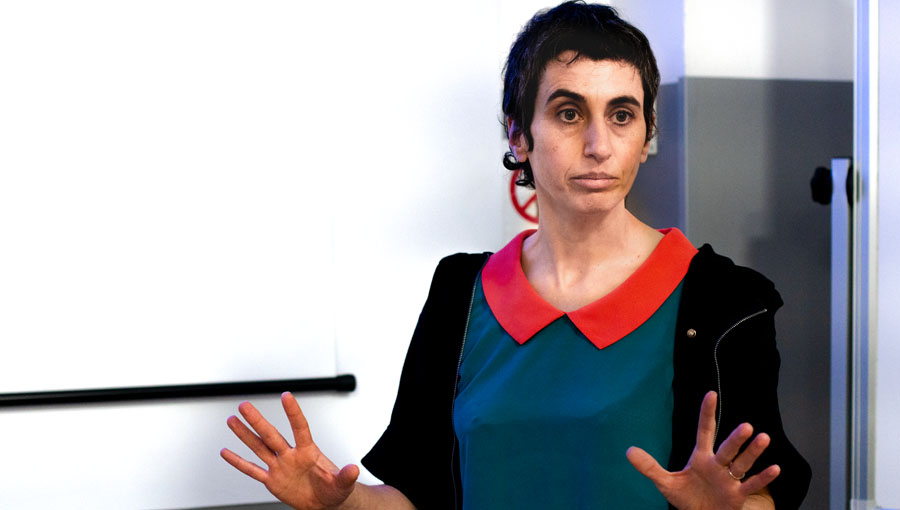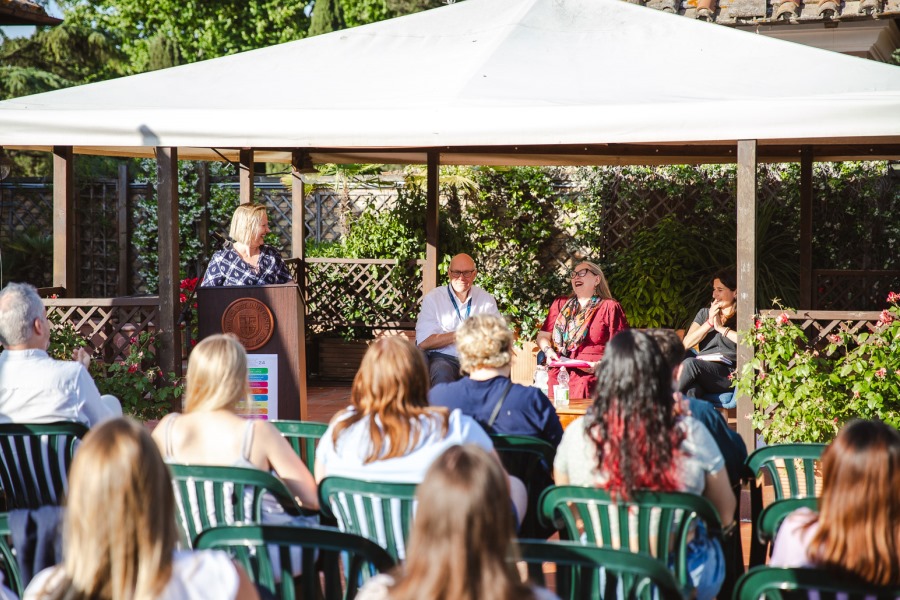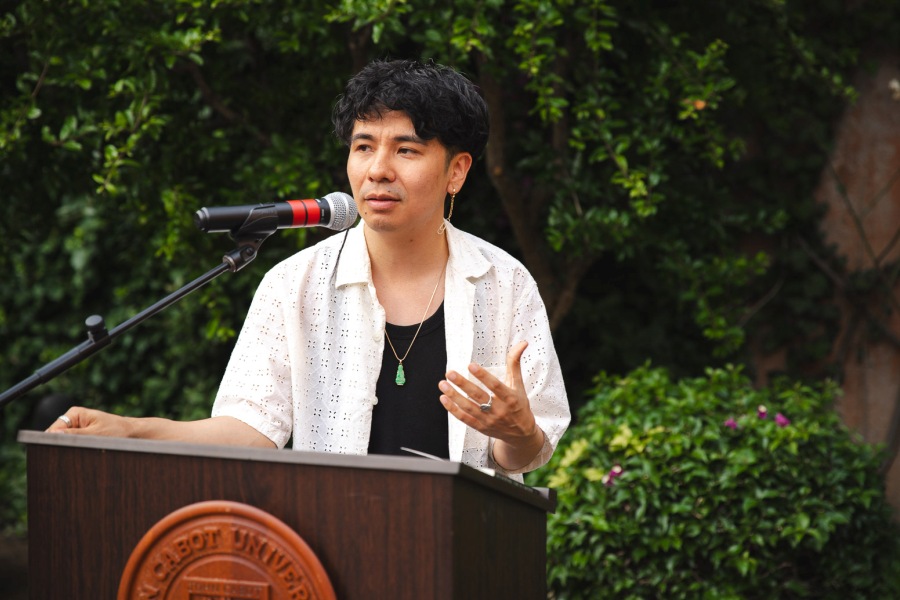A Doll's House with Pornography: JCU Welcomes Artist Antonia Hernández
The JCU Department of Communications welcomed Chilean artist and Ph.D. fellow at Concordia University in Canada Antonia Hernández for a conversation on “Maintenance Pornography” on November 18, 2019. The talk was part of the JCU Communications Department’s Digital Delights and Disturbances Lecture Series and was moderated by JCU Professor Donatella Della Ratta.
Hernández explored the online sexcam platform Chaturbate to understand its work economy through the “lens of pornography.” “Chaturbate is a popular platform for adult content, with millions of visitors every day,” said Hernández. This online commercial platform provided a privileged point of view to explore and experience the economy behind it. Consequently, Hernández decided to research the platform’s economy and “the degree of exploitation and wildness of capitalism.”
Chaturbate
“Chaturbate is based on the one-to-many model of broadcasting, so a performer might broadcast at once to twenty thousand people,” said Hernández. There are more than 6000 channels, called “rooms,” broadcasting simultaneously. The users can broadcast sexual performances and viewers can watch and donate to the performers. The business model of Chaturbate is based on receiving user-generated content just like YouTube but also “like Airbnb or Uber, they charge a formal provision for informal services without taking any responsibility as a platform.”
Hernández explained how the donation practice works in Chaturbate. The platform itself is free, as any adult can broadcast content and there is no fee to enter, watch, or perform on the platform, nor is a membership fee required. The donations are voluntary and are made with the currency of the platform. For the donations to happen, the quality of both performance and communication with the audience is crucial. The performer has to find a way to encourage donations, yet “the aura of fun and leisure promoted by the platform makes it unsuitable for performers to directly ask for money.” Some performers create money goals that need to be reached in order for them to perform a certain action. Hernández highlighted that the performer is responsible for communicating with an active audience, which sometimes can be larger than 1000 people.
“The performers on Chaturbate are independent contractors who are not hired by the platform,” said Hernández. However, the platform keeps half of the donations that performers earn. Hernández added that “for comparison, Uber charges 25 percent.” As the donations are voluntary, the performers are not working but they are “expressing themselves” in their free time. Consequently, “the platform avoids any legal solicitation issues, as officially the platform does not provide sex-work-based services,” explained Hernández.

Antonina Hernández on Maintenance Pornography
Researching the dollhouse
Hernández also talked about her art-based research project called “Maintenance Pornography.” She explained that her research and artistic practice are focused on “exploring technology through pornography and exploring pornography through technology.” Hernández decided to use a dollhouse as a research tool. She said that because channels are called ‘rooms,’ “I saw it as a kind of business complex where everyone is working 24/7 while smiling and being naked.” Hernández built a dollhouse with small rooms and realistic interiors, and she incorporated screens in its walls. On the screens, she broadcast videos from Chaturbate. “My goal was to create a sense of a common place where the work of Chaturbate performers is visible and where I could interact with it,” said Hernández.
Soon, however, Hernández started feeling uneasy due to ethical concerns. “It was true that performers had no expectation of privacy on the platform, but it is also true that they perhaps did not expect to be exhibited in a gallery space. I started being suspicious about my research practice and I did not want to reproduce my work in a gallery out of respect of their privacy,” Hernández said.
She added that at this point she realized that in order to fully understand the phenomenon of Chaturbate and to explore interactions with the viewers, she had to enter it as a performer.
She continued to use her dollhouse as a prop, she broadcast videos in a small, dollhouse-like room, decorated accordingly with miniature furniture and accessories. Hernández explained that she broadcast her chores with miniature, dollhouse tools, such as dusting, washing the floor, vacuuming, with only her hand visible, “I broadcast my actions through the sexcam platform, talking to my audience, making jokes, writing their names in a small notebook, cleaning up more.”
“It’s not only about sex”
The maintenance of the fanbase requires a performer to commit to a schedule. For the majority of the performers, their practice on the platform is not profitable, but, as Hernández said, “those who do profit are able to make a living because all the others cannot. The platform is based on a model that profits from this inequality.” She added that being a performer on Chaturbate, despite the platform’s narration, is a full-time job.
Hernández also highlighted that the relationship between the broadcaster and the viewers goes beyond the delivery of a sex-based service. Based on her research, she noticed that both viewers and performers are often looking for a form of entertainment, for company, and especially for a chance to communicate. Hernández said that some performers even use specific moderating tools provided by the platform, such as bots and apps, in order to manage chatting with larger audiences. “It is not only about sexual satisfaction,” said Hernández.
In Chaturbate users expect the labor to be masked. Just as with Amazon Prime or Uber, users expect to have the service delivered without knowledge of the labor behind it. The platform creates the fiction that there is no work involved. These maintenance actions are hidden because their visibility would reveal a secret: “the work of the work, the fragility of the infrastructure, the decay of the platform,” Hernández concluded.





